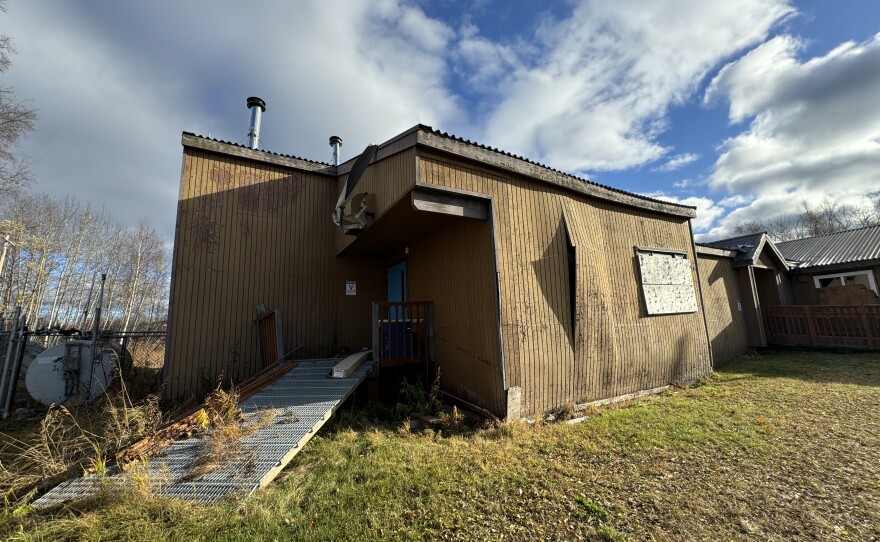
**BETHEL, ALASKA** — An investigative report by KYUK has revealed that Alaska’s rural schools are in dire need of major infrastructure investment. The findings paint a concerning picture of aging facilities, outdated equipment, and deteriorating learning environments that could impact the education of thousands of students across the state.
The report, which has been months in the making, highlights the struggles of schools in rural and remote areas, where the lack of resources and funding has led to a growing backlog of repairs and upgrades. Many schools, some built decades ago, are facing critical issues like leaky roofs, unreliable heating systems, and outdated electrical wiring, all of which threaten the safety and effectiveness of the educational environment for students and staff alike.
### A Struggling System
Alaska’s rural school systems have always faced challenges due to the state’s vast and isolated geography, but the situation has worsened in recent years. With rising costs of construction, transportation, and maintenance, rural schools are finding it increasingly difficult to address these issues. Many schools rely heavily on state and federal funding, which has been inconsistent in recent years due to budget cuts and shifting priorities at the state level.
“We’re dealing with buildings that are falling apart,” said Mary L. Johnson, a school principal in a remote Alaskan village. “The conditions are dangerous, but we do the best we can to keep everything running. But how much longer can we keep doing that? How much longer can we expect students to learn in these kinds of conditions?”
The aging infrastructure in many schools is not just a matter of discomfort — it directly affects the quality of education. Broken windows, inadequate lighting, and poor air circulation can make classrooms unsafe and less conducive to learning. In some areas, teachers are forced to work in facilities without reliable access to the technology they need, putting them at a disadvantage compared to urban schools that are better equipped.
### Outdated Heating and Power Systems
One of the most pressing issues that has been uncovered by KYUK’s investigation is the widespread problems with heating systems in rural schools. Many of Alaska’s rural schools depend on outdated, inefficient heating systems, which are often prone to failure. This is especially problematic during the harsh winter months when temperatures can drop well below freezing. Some schools have had to cancel classes or send students home early because heating failures left classrooms dangerously cold.
“The last thing you want is for kids to go home because it’s too cold to learn,” said Bill Turner, a school district superintendent in Southwest Alaska. “But we’re seeing this happen more and more. When your heating system breaks down, there’s not much you can do.”
Additionally, many rural schools also face issues with unreliable power systems. Blackouts and power surges can disrupt classes and put expensive technological equipment at risk. With many schools still relying on generators for power in more remote areas, even brief power outages can have a significant impact on students’ learning experiences.
### Lack of Educational Technology
In an era where technology plays a crucial role in education, many rural schools in Alaska are struggling to provide students with the same resources as their urban counterparts. The KYUK investigation found that many rural schools lack the infrastructure necessary to support modern technology like high-speed internet, computers, and smartboards.
“The digital divide is real in Alaska,” said Dr. Emily Wedgewood, a professor of education at the University of Alaska. “Students in rural areas are falling behind their peers in other parts of the country simply because they don’t have the tools they need to succeed. The internet is slow or nonexistent in many communities, and that hampers everything from research to online learning.”
Some schools have tried to address the gap by providing students with tablets or laptops, but these devices often go unused or sit idle due to the lack of reliable internet access. As remote learning has become more prevalent in recent years, this issue has become even more pressing.
### Teacher Retention Challenges
The state of the infrastructure is also contributing to the challenges of retaining quality teachers in rural Alaska. Many teachers are hesitant to work in schools where the facilities are outdated or in disrepair. Teachers often have to live in substandard housing provided by the school, which can be poorly maintained or located far from necessary amenities.
“I’ve had teachers leave because of the living conditions, and it’s hard to blame them,” said Lisa Johnson, a longtime educator in the Alaskan village of Kotzebue. “When you’re dealing with mold, broken heaters, and leaky roofs in the school, it’s hard to focus on teaching. And it’s even harder to make a home here when the housing is just as bad.”
As a result, schools in rural Alaska often face high turnover rates, which can be disruptive to students’ education. Consistency in teaching staff is critical for student success, but the lack of investment in infrastructure is making it difficult for rural schools to keep talented educators.
### The Need for Immediate Action
The KYUK investigation has sparked renewed calls for increased investment in Alaska’s rural education infrastructure. Advocates are calling on state and federal lawmakers to prioritize funding for school repairs, technology upgrades, and teacher retention programs.
“We need a comprehensive plan to address these issues,” said Jonathan Paul, an education advocate based in Anchorage. “Alaska’s rural students deserve the same opportunities as students in more urban areas. If we want to give them a chance at success, we need to make the necessary investments in their schools and in their future.”
State lawmakers have expressed concern over the situation, but budget constraints and competing priorities have made it difficult to find the funds needed to address these issues on a large scale. Governor Lisa Murkowski has acknowledged the problem and has vowed to work with lawmakers to identify solutions. However, with state finances already stretched thin, it remains unclear how much funding will be allocated to address the needs of rural schools.
### The Path Forward
The issues uncovered by KYUK’s investigation have sparked a broader conversation about the state of education in Alaska, and many are hopeful that the attention brought to the issue will result in real change. Advocates are urging local communities to come together and push for action, emphasizing that the long-term benefits of investing in infrastructure and education will far outweigh the costs.
For the students in Alaska’s rural schools, the hope is that the necessary infrastructure investments will come before it’s too late. Without the proper resources, they risk falling further behind their peers across the country — a gap that could take years to close.
As the investigation continues and more details emerge, one thing is clear: Alaska’s rural schools cannot wait any longer for the help they so desperately need. The time for action is now.







